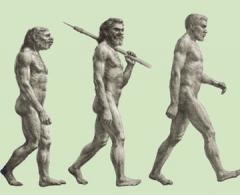
This Article From Issue
March-April 2011
Volume 99, Number 2
Page 127
DOI: 10.1511/2011.89.127
This roundup summarizes some notable recent items about scientific research, selected from news reports compiled in Sigma Xi’s free electronic newsletters.
Moon’s Core Revealed
Forty-year-old lunar seismic data have finally divulged some secrets. Geologists long suspected that the Moon has a metal core—but to confirm its size and composition, they needed to see how it reflects seismic waves from moonquakes. To this end, Apollo astronauts installed four seismometers on the Moon, but the wave patterns proved too complicated to analyze in the 1970s. Now, with today’s computers and a method to combine waves from similar quakes to get a stronger signal, researchers detected a solid iron center 480 kilometers across. That’s surrounded by layers of liquid iron and partially molten rock and magma. The new details will help fill out the violent history of the Moon’s formation.
Weber, R. C., et al. Seismic detection of the lunar core. Science (published online January 6)
Honeybee Cooties
For bees and wasps, flowers may be as germy as a kindergarten sandbox. Several viruses are implicated in the dreaded honeybee colony collapse disorder, and entomologists wondered how the diseases spread. They found viruses in more than two-thirds of the pollen pellets carried by foraging honeybees (Apis mellifera), and some of the same microbes turned up in 11 other bee and wasp species. Furthermore, a greenhouse experiment confirmed that two bee species can catch each other’s viruses by foraging on the same plants. In the field, researchers don’t know which species got infected first, or who is leaving germs on the flowers. But clearly, nasty viruses are circulating freely among bees and wasps, and might have a role in the widespread pollinator decline.
Singh, R., et al. RNA viruses in hymenopteran pollinators: Evidence of inter-taxa virus transmission via pollen and potential impact on non-Apis hymenopteran species. PLoS ONE 5:e14357 (December 22)
Climate Psychology
Grim warnings about climate change may prompt more skepticism than action, simply because they seem unjust. Portraying children as innocent victims, for instance, conflicts with common assumptions that the world is fair—a clash that might trigger doubt and inaction. Indeed, a recent survey showed that the stronger one’s belief in a just world, the greater one’s skepticism after reading a grim global warming article (but not an optimistic one that also presented solutions). Researchers found they could reduce participants’ skepticism—and increase their willingness to act—by tweaking their worldviews with statements such as “Often, justice will not prevail.” Environmental organizations may want to take note.
Feinberg, M., and R. Willer. Apocalypse soon? Dire messages reduce belief in global warming by contradicting just-world beliefs. Psychological Science (published online December 9)
Slimy Sleeping Bags
Several species of coral reef fish sleep nestled in thick cocoons of mucus, which they secrete from specialized glands. Biologists have finally found a reason for this behavior: It keeps bloodthirsty isopods at bay. In the lab, researchers let 50 bullethead parrotfish (Chlorurus sordidus) secrete their cocoons and go to sleep. Then they slid the mucus off of half the fish, and added gnathiid isopods to the tanks. By morning, the crustaceans had bitten 94 percent of the naked fish, but only 10 percent of those with cocoons. The mucus protected the fish like marine mosquito nets.
Grutter, A. S., et al. Fish mucous cocoons: The ‘mosquito nets’ of the sea. Biology Letters (published online November 17)
Visors for Shell Shock
Brains fare poorly during explosions. Even without causing overt injury, blast waves easily penetrate the skull and may cause long-term symptoms such as memory loss. Brain injuries are common among soldiers in Iraq and Afghanistan. But a new simulation suggests that a simple polycarbonate visor, added to existing combat helmets, could reduce blast-related pressure on the brain by a factor of five. Although the simulation was detailed—accounting for skin, helmet pads and so on—only real-world tests can confirm the value and practicality of the proposed visors.
Nyeina, M. K., et al. In silico investigation of intracranial blast mitigation with relevance to military traumatic brain injury. Proceedings of the National Academy of Sciences 107:20703–20708 (November 30)
Rats Diagnose TB
Giant African pouched rats (Cricetomys gambianus) are helping Tanzanian clinics screen patients for tuberculosis. In exchange for pieces of banana, the trained rodents sniff sputum samples and pause to indicate the infected ones. In a recent trial, rats reviewed more than 20,000 specimens and caught 95 percent of the cases that human microscopists found, plus several hundred more that were previously missed. It’s still unclear what role the rodents will play in public health, but efficiency is on their side: Even with three people helping them, rats check several times more samples per staff-hour than a microscopist can.
Poling, A., et al. Using giant African pouched rats to detect tuberculosis in human sputum samples: 2009 findings. American Journal of Tropical Medicine and Hygiene 83:1308–1310 (December)
First American in Europe?
A Native American woman may have sailed to Iceland with the Vikings. That’s one explanation for a rare mitochondrial DNA lineage, dubbed C1e, found in modern Icelanders. Although unique, C1e closely resembles Asian and Native American sequences. But it’s not a recent import: Using the country’s genealogical and genetic database, researchers traced all known C1e carriers to four women born in Iceland in the early 1700s. Variation among the four families implies a common ancestor who lived even earlier, perhaps when seafaring Norsemen explored America around 1000. Icelandic sagas do recount tensions between Vikings and American natives, but perhaps the poets left something out.
Ebenesersdóttir, S. S., et al. A new subclade of mtDNA haplogroup C1 found in Icelanders: Evidence of Pre-Columbian contact? American Journal of Physical Anthropology 144:92–99 (January)

American Scientist Comments and Discussion
To discuss our articles or comment on them, please share them and tag American Scientist on social media platforms. Here are links to our profiles on Twitter, Facebook, and LinkedIn.
If we re-share your post, we will moderate comments/discussion following our comments policy.